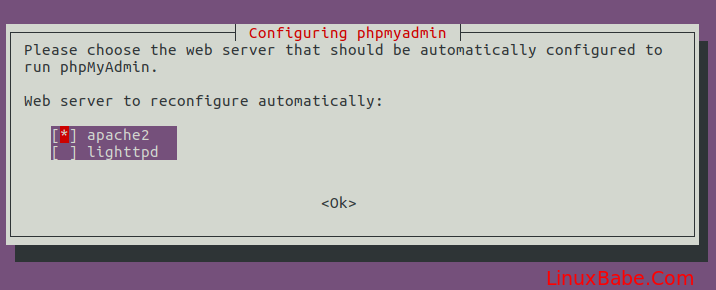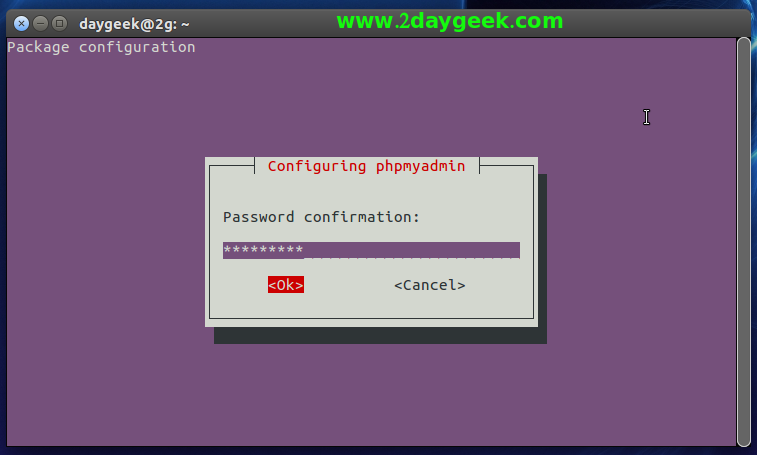

Install and use the Amazon CloudWatch agent.

Give SSH access to another person, such as a customer.Learn about the Bitnami Configuration Tool.Move AWS instances between the AWS Console and the Bitnami Launchpad for AWS Cloud.Configure third-party SMTP for outbound emails.Reassociate an existing IP address with a new AWS instance.

Understand what data Bitnami collects from deployed Bitnami stacks.Learn about Bitnami PHP application modules deprecation.Understand the default directory structure.Learn about the SSH warning 'REMOTE HOST IDENTIFICATION HAS CHANGED'.
#OPEN PHPMYADMIN UBUNTU FREE#
If you have any question feel free to leave a comment below. Conclusion #įinally, you have successfully installed phpMyAdmin with Apache on Ubuntu 18.04 system.
#OPEN PHPMYADMIN UBUNTU PASSWORD#
Now, when you access your phpMyAdmin subdirectory, you will be prompt for the additional account name and password that you just configured: Once you will enter basic authentication details then only you will be taken to the phpMyAdmin login page where you need to enter your MySQL administrative user login credentials. To take effect restart the Apache service by type: sudo systemctl restart apache2 Options +FollowSymLinks +Multiviews +Indexes # change this lineĪfter that, Save and close the file. To do it open nf by typing : sudo nano /etc/apache2/conf-available/nf Now we will configure Apache to password protect the phpMyAdmin directory and use the. Once you execute above command it will prompt you to enter password and confirm password as below: New password: You can choose any user name of your choice. Here, newadmin is administrative username which we created for access phpMyAdmin interface. htpasswd file in /etc/phpmyadmin directory: sudo htpasswd -c /etc/phpmyadmin/.htpasswd newadmin Generally, phpMyAdmin is a popular target for attackers, so we can add extra security layer to make phpMyAdmin directory password protected by setting up a basic authentication.Īt First, we will create a password file with user using the htpasswd tool that comes with the Apache package. To access the phpMyAdmin interface open web browser and type your server’s public IP address or domain name followed by /phpmyadmin: Enter the administrative account username and password which you created on previous step and hit on Go button.Īfter successful log in, you’ll see the phpMyAdmin user interface, which will look something like this: Securing phpMyAdmin # TO WITH GRANT OPTION Accessing phpMyAdmin # Next, create a new administrative user with strong password and grant appropriate permissions by typing: mysql> CREATE USER IDENTIFIED BY 'STRONG-PASSWORD'

You can login by below command: sudo mysql Now, we will use that user to login to phpMyAdmin and do further administrative tasks on our MySQL or MariaDB server. This user will have the same privileges as the root user and will be set to use the mysql_native_password authentication method. Since phpMyAdmin requires users to authenticate with a password, so instead of changing authentication method we will create a new administrative MySQL account in order to access the interface. It will not be good to change authentication method for the MySQL root user. In order to log in to phpMyAdmin as your root MySQL user, you will need to switch its authentication method from auth_socket to mysql_native_password. This will increase some greater security and usability in many cases, but it can also complicate when you need to allow an external program like phpMyAdmin. It means that you can’t authenticate as a root by providing a password. In Ubuntu systems, the root MySQL user is using the auth_socket plugin by default to authenticate. Sudo systemctl restart apache2 Creating MySQL User and Set Privileges #


 0 kommentar(er)
0 kommentar(er)
